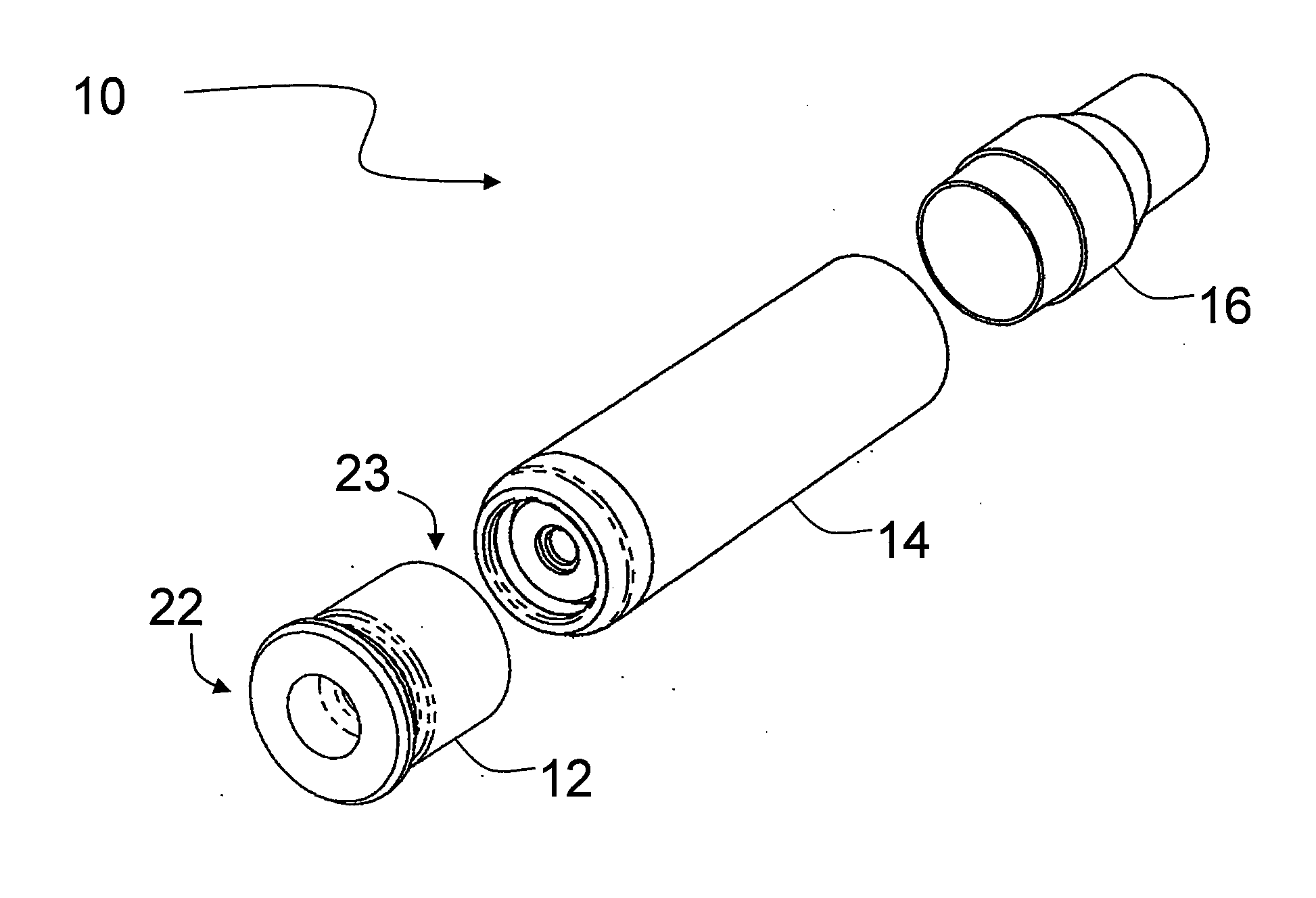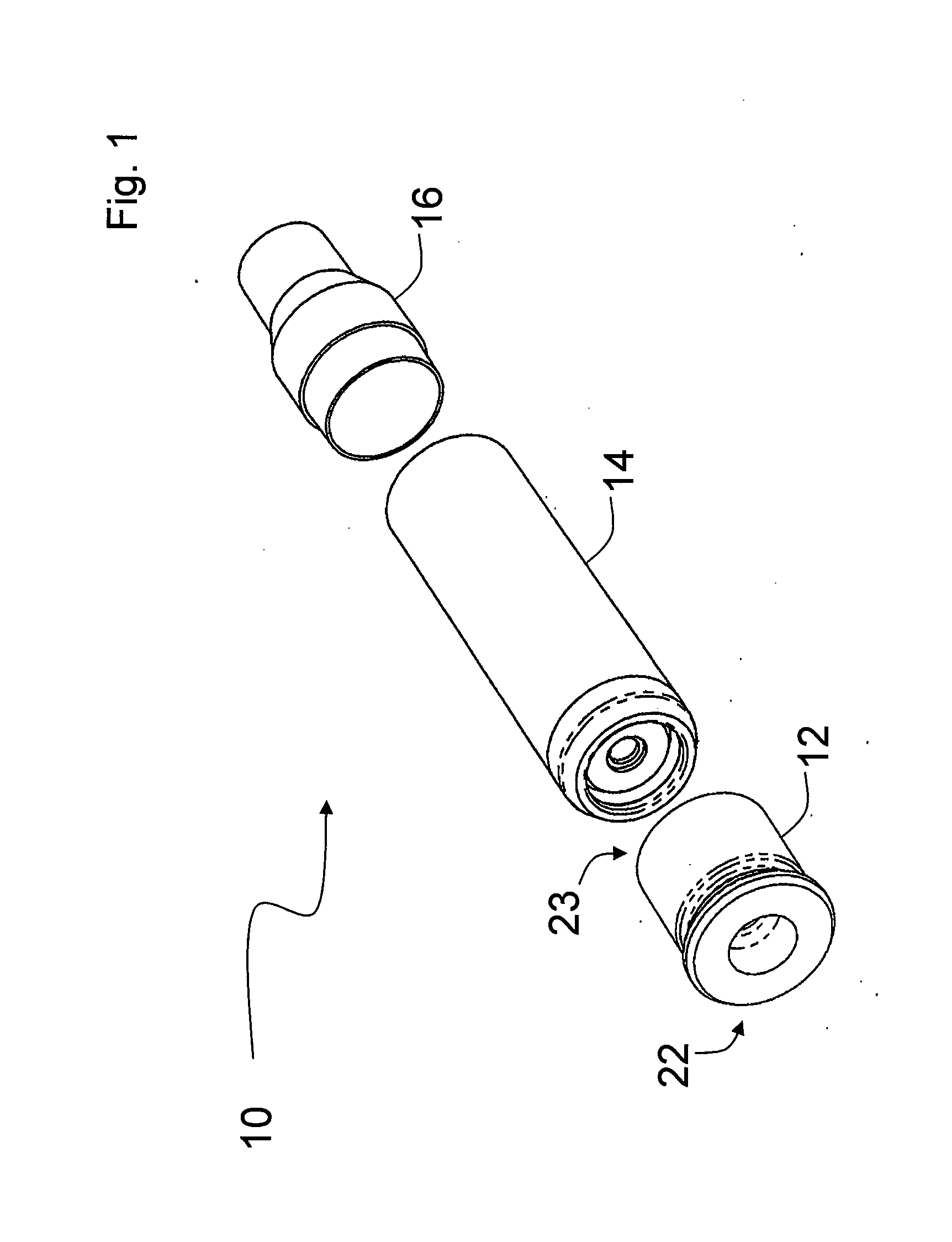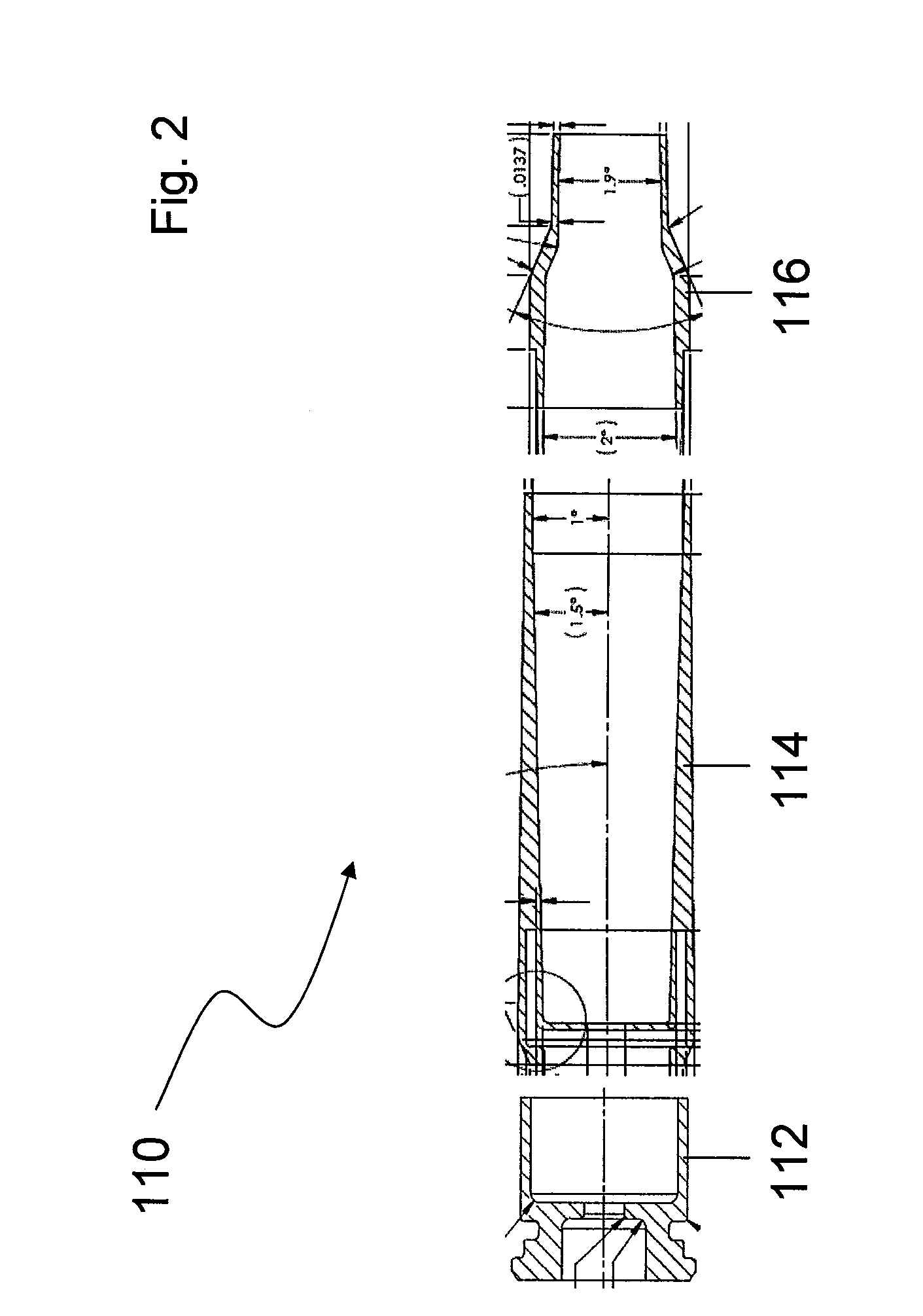Ammunition cartridge case bodies made with polymeric nanocomposite material
a nano-composite material and ammunition cartridge technology, applied in the direction of ammunition, cartridge ammunition, weapons, etc., can solve the problems of increased weight, fatigue, heat stress, injury, performance degradation, etc., and the army's weapons and equipment is still too heavy to allow foot soldiers to maneuver safely under fir
- Summary
- Abstract
- Description
- Claims
- Application Information
AI Technical Summary
Benefits of technology
Problems solved by technology
Method used
Image
Examples
examples
[0065]
TABLE 1Formulation of Impact Modified NanocompositePolyamide MaterialComponent% by weight907057Fusabond 498D27201214.6Cyanox HS0.5Calcium Stearate0.4Chimmasorb 9440.5
[0066]A polymer composition according to invention and detailed in Table 1 was made. The 9070 is a nanocomposite component in which 7 wt % nanoclay component was incorporated into PA6 by method of in situ batch polymerization. Fusabond 498D was added as impact modifier component. Nylon multipolymer component 2012 (NYCOA 6 / 6,36) was included along with additives Cyanox HS, Calcium Stearate, and Chimmasorb 944. The impact modified composition of the invention may also be known as NYCOA 8330R.
[0067]The polymer composition according to the invention yielded increases flexural modulus and tensile strength as compared with similar materials formulated with and without impact modifier, as shown on Table II. Inventive sample 8330R shows improved flexural modulus and tensile strength over polymer without impact modificatio...
PUM
 Login to View More
Login to View More Abstract
Description
Claims
Application Information
 Login to View More
Login to View More - R&D
- Intellectual Property
- Life Sciences
- Materials
- Tech Scout
- Unparalleled Data Quality
- Higher Quality Content
- 60% Fewer Hallucinations
Browse by: Latest US Patents, China's latest patents, Technical Efficacy Thesaurus, Application Domain, Technology Topic, Popular Technical Reports.
© 2025 PatSnap. All rights reserved.Legal|Privacy policy|Modern Slavery Act Transparency Statement|Sitemap|About US| Contact US: help@patsnap.com



